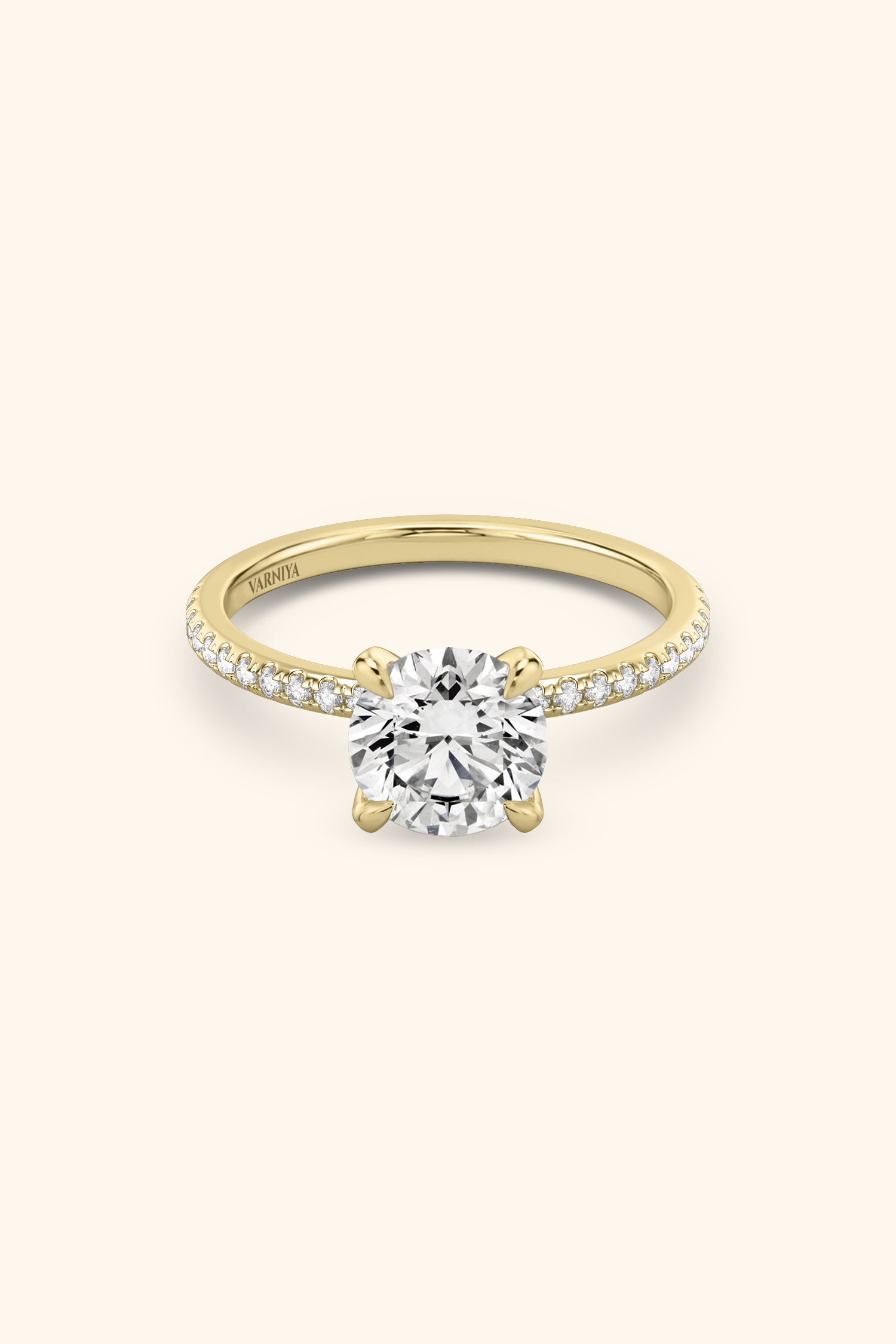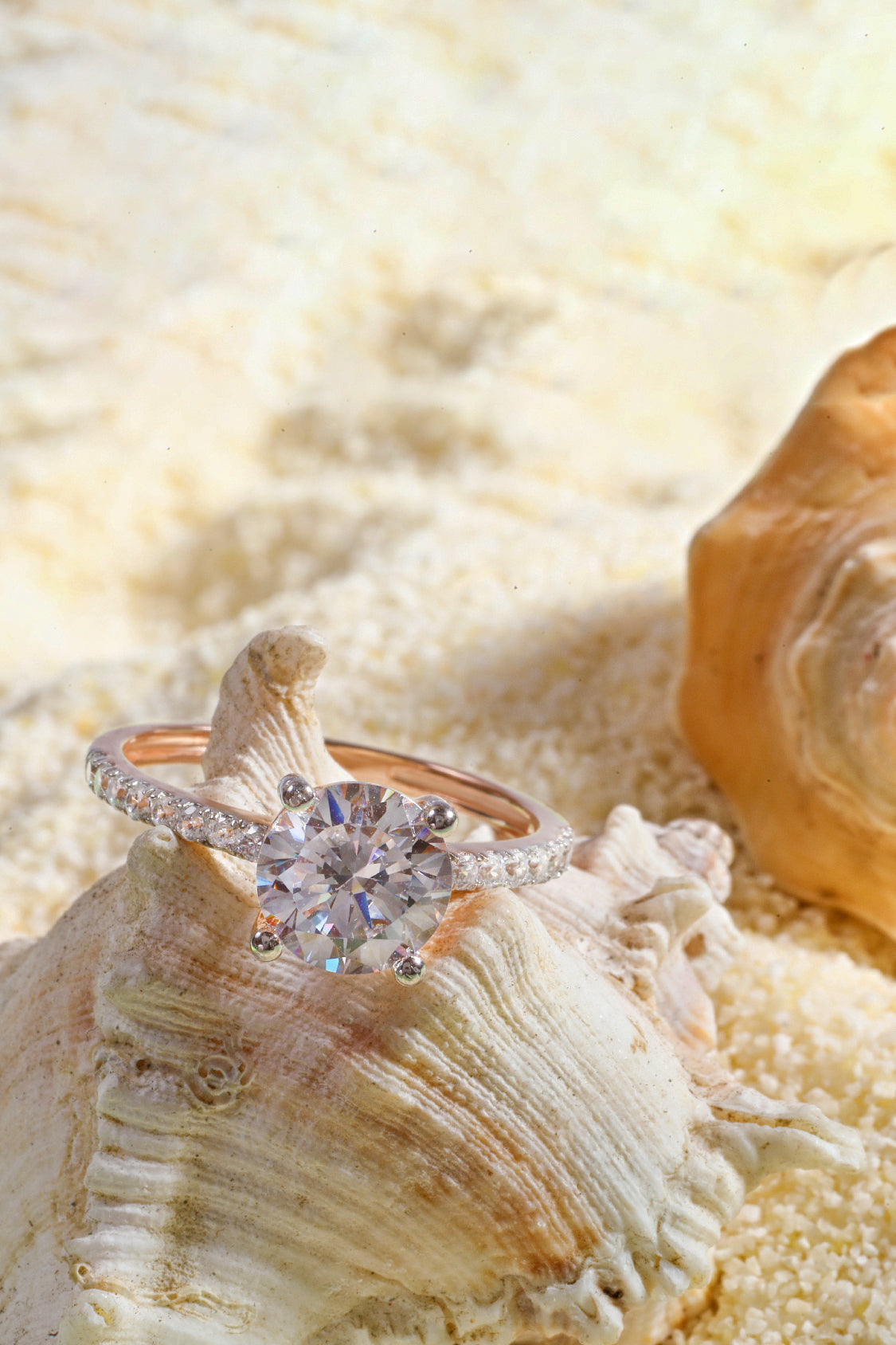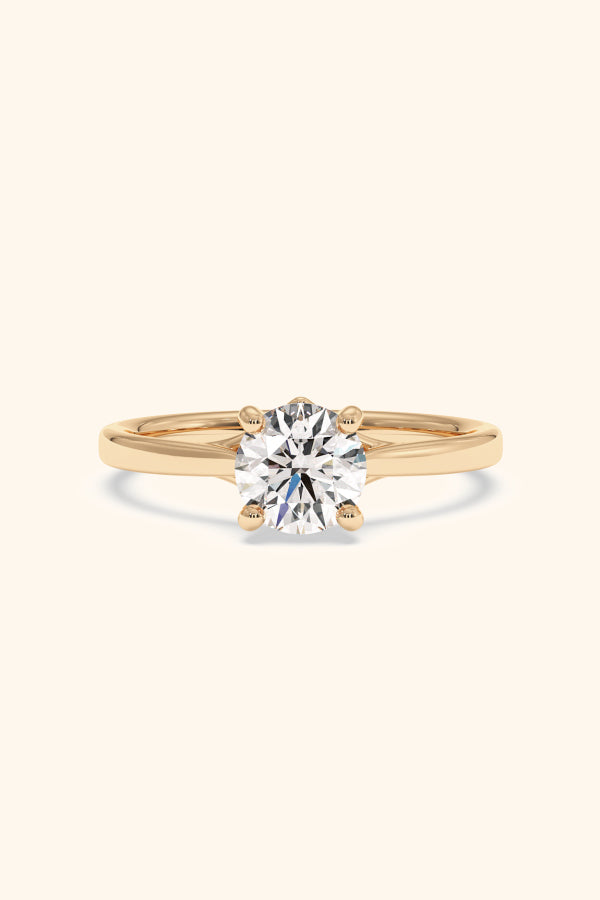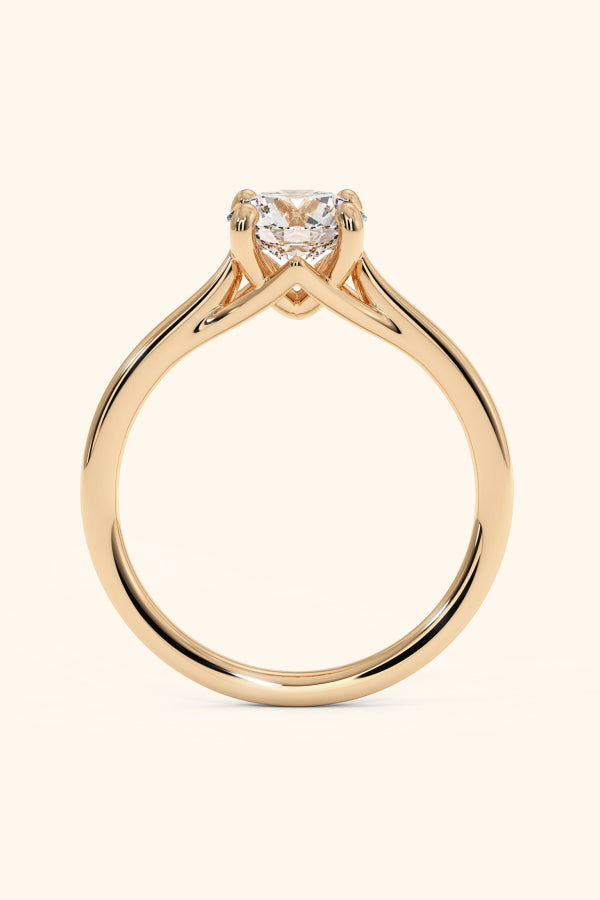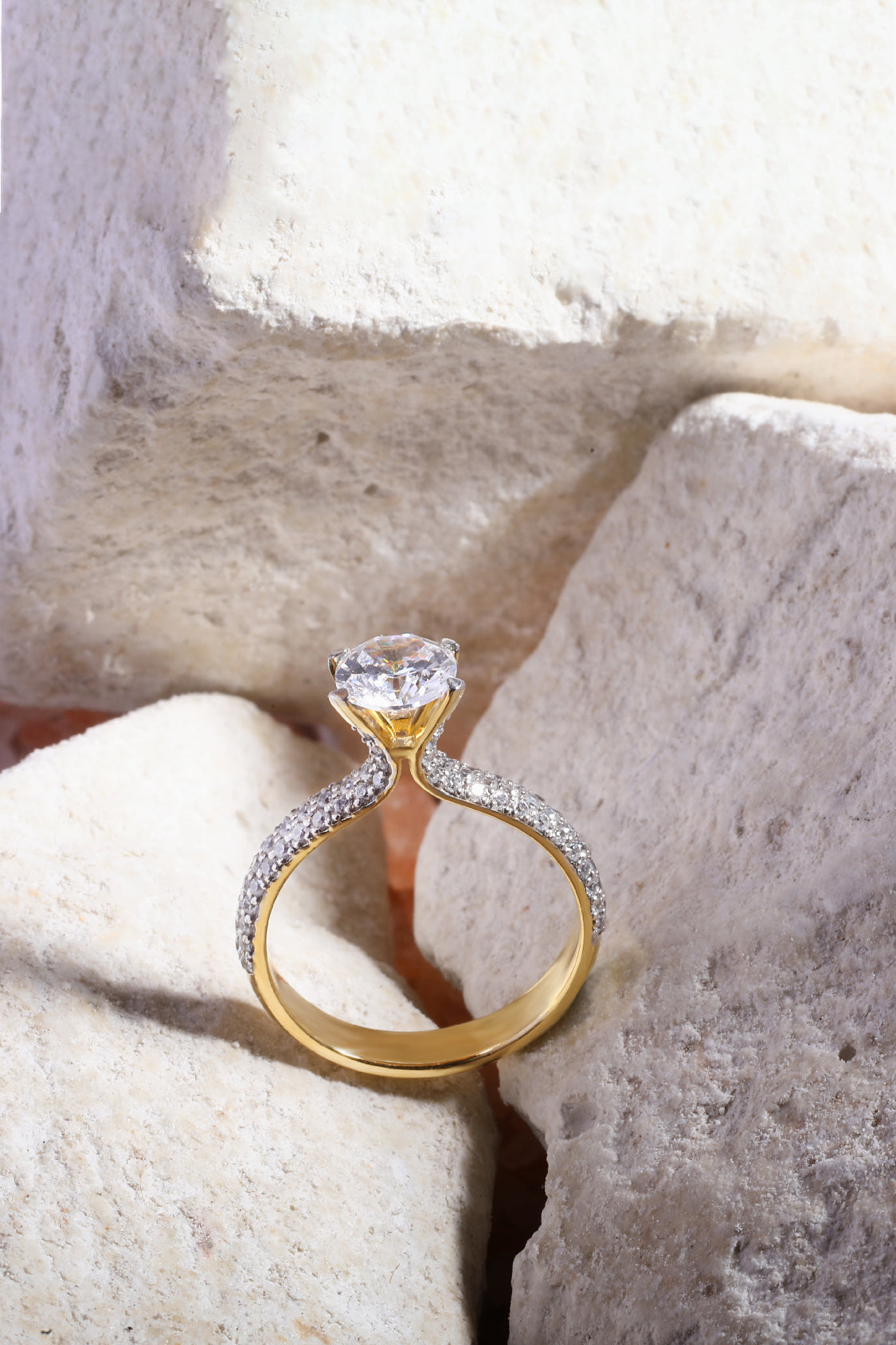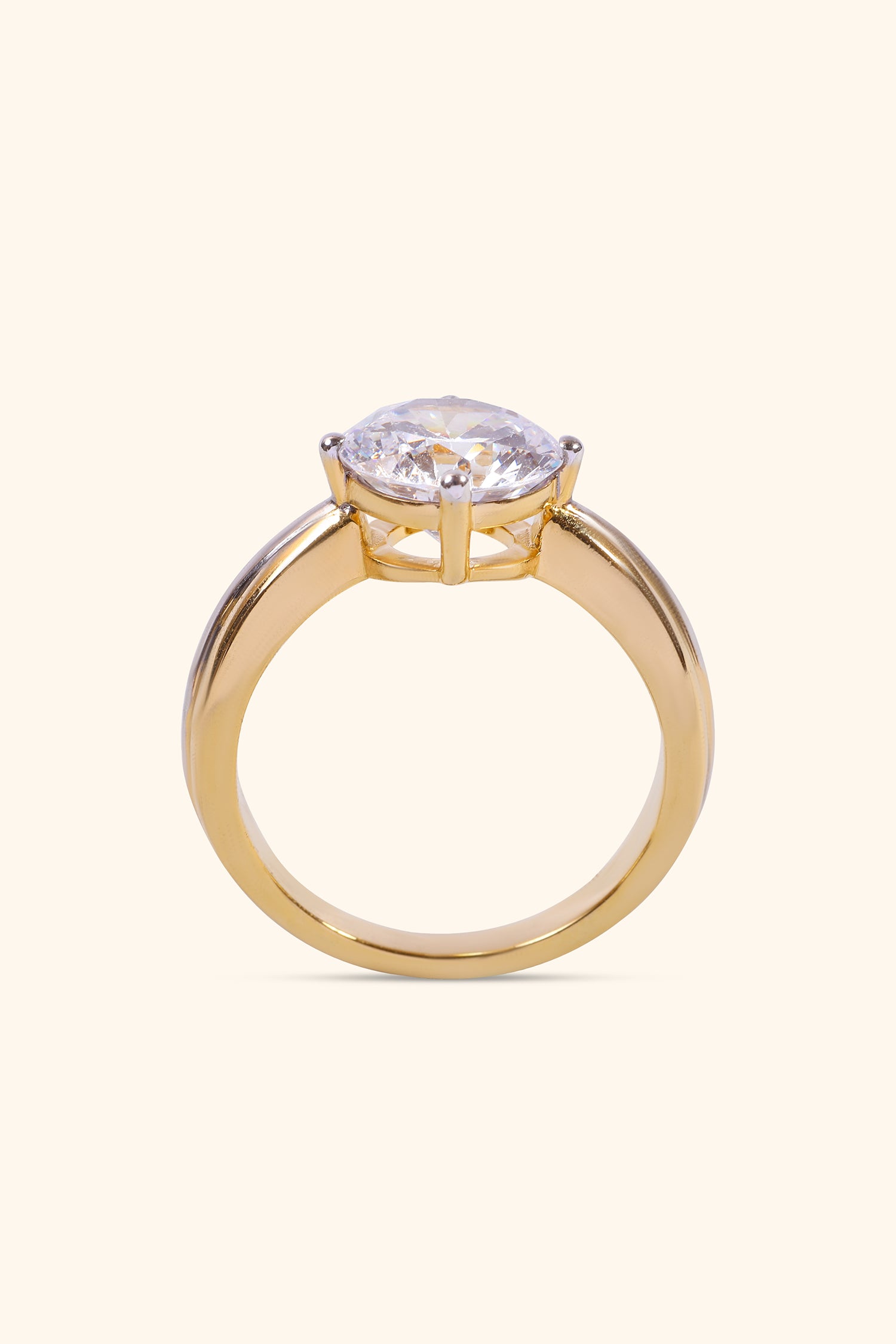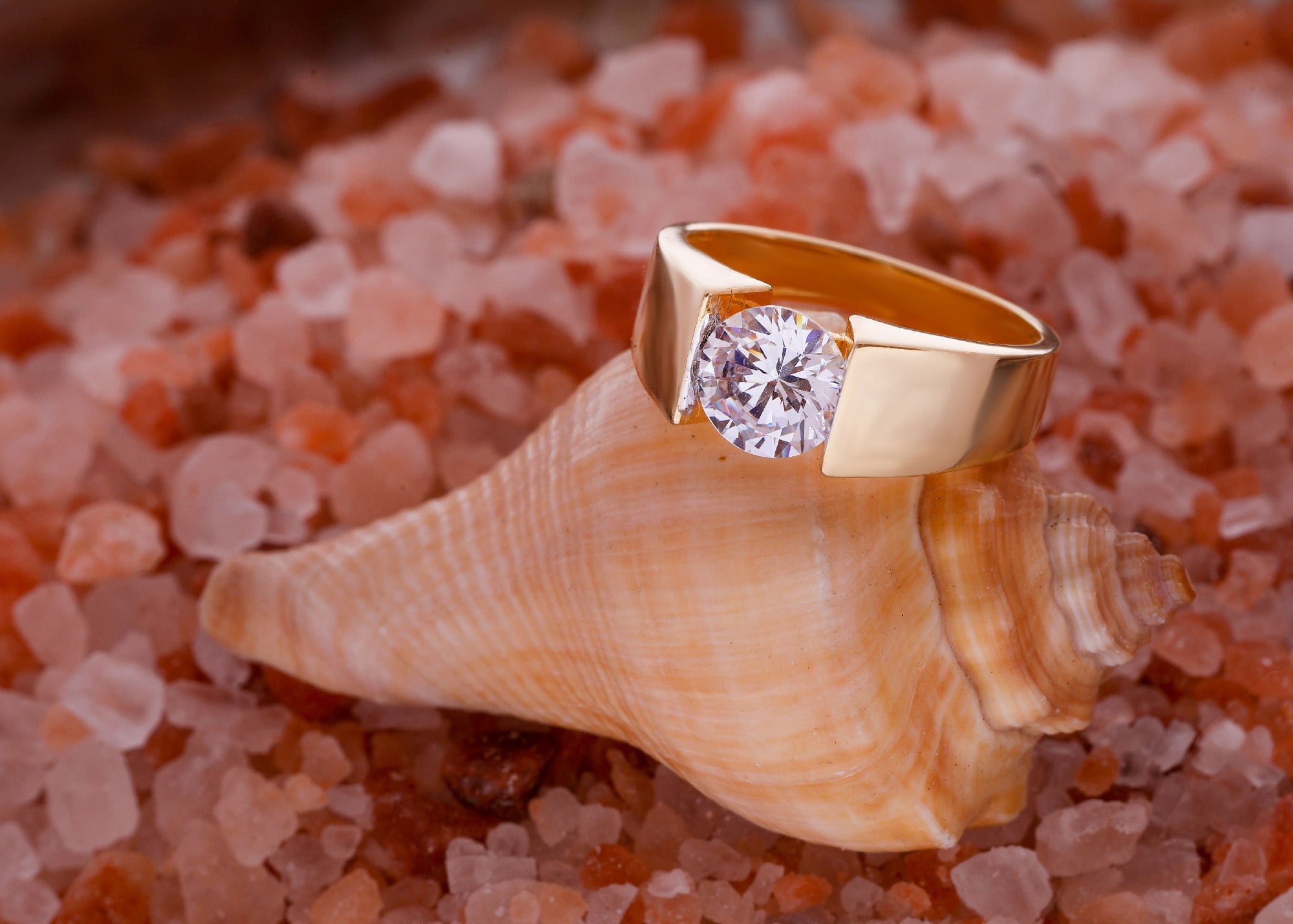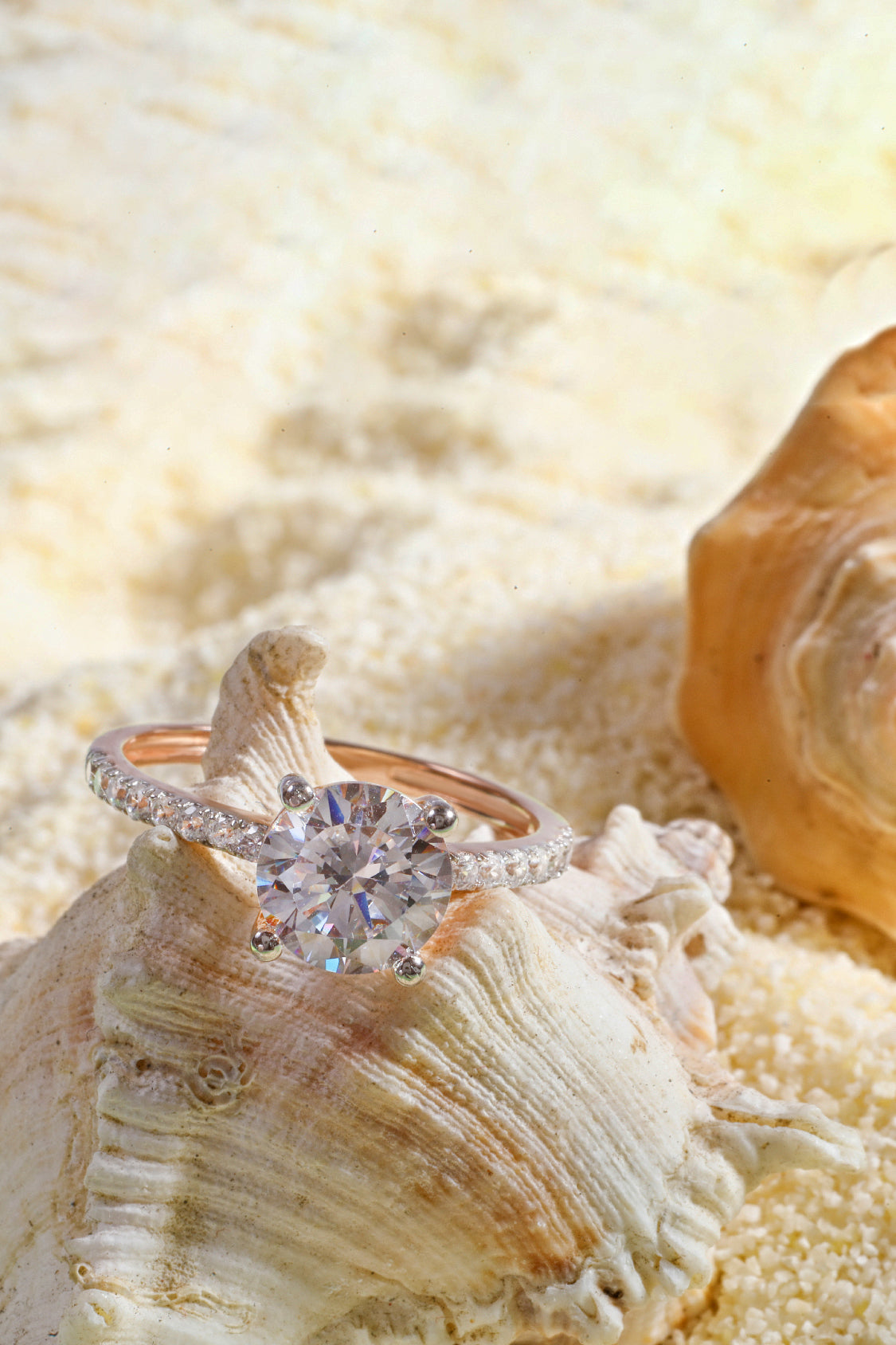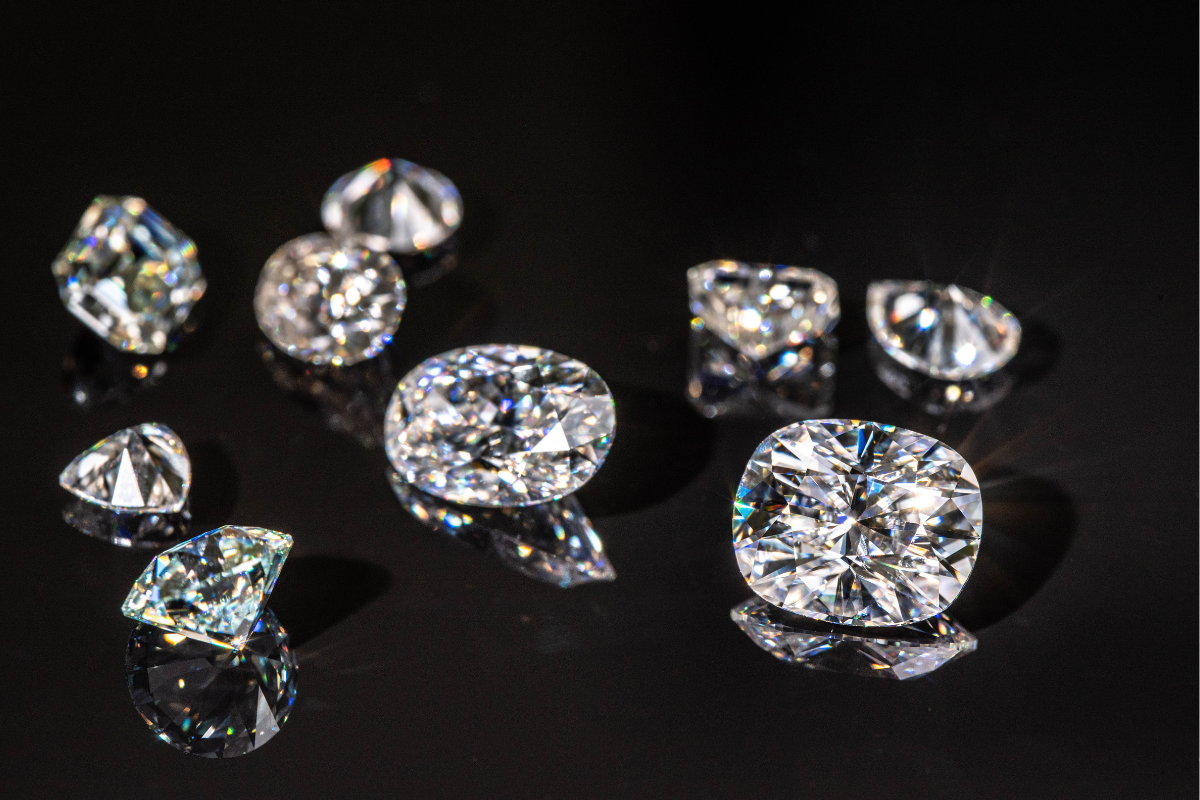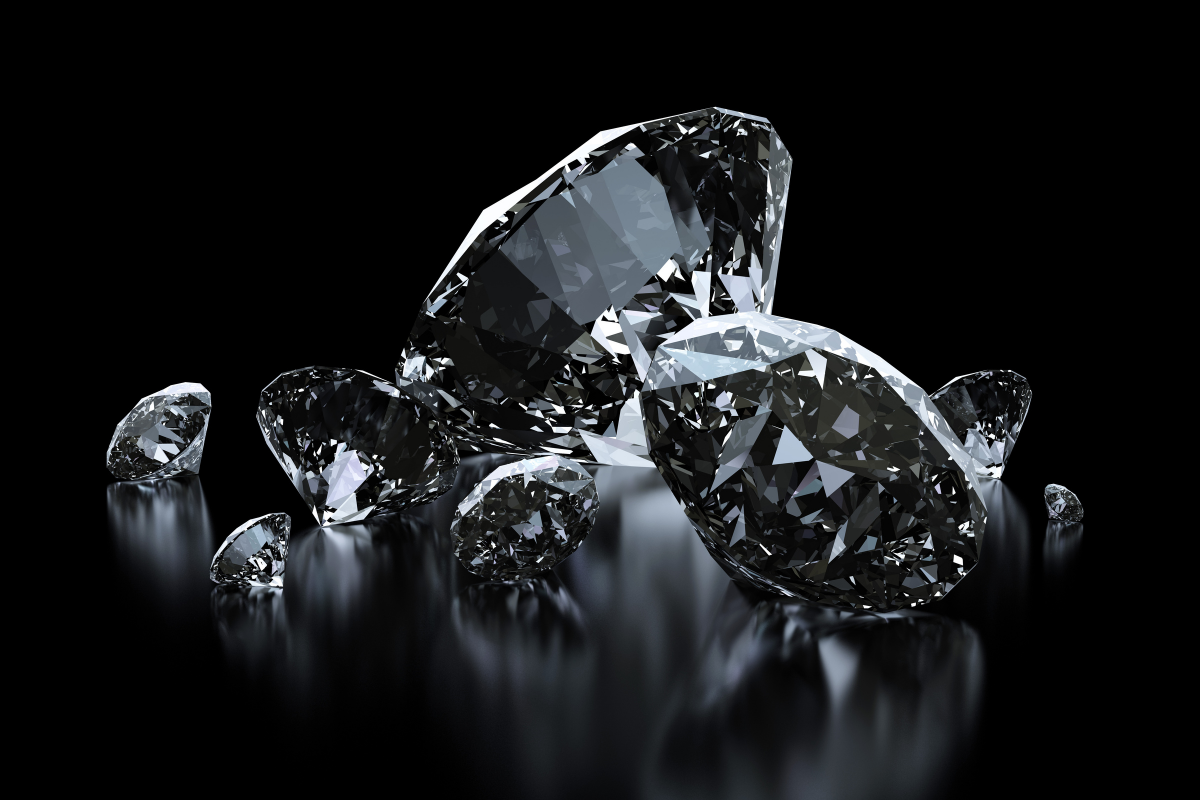
What Are the Advantages to Buying a Lab-Grown Diamond in 2025?
Want an eco-friendly alternative to mined diamonds? Discover why lab-grown diamonds are the top sustainable choice in 2025. Ready to explore diamonds without the drama? If you're like most savvy shoppers in 2025, you're probably wondering what's all the buzz about lab-grown diamonds—and for good reason!
Did you know these sparkling gems share identical physical and chemical properties with mined diamonds, minus the ethical baggage?
And here’s a fun fact: According to Forbes, lab-grown diamonds can cost up to 50% less than traditional mined diamonds. (Hello, savings!)
So, grab your favorite cup of coffee, relax, and let’s dive into why choosing a lab-grown diamond might be your smartest—and most guilt-free—decision yet.
What is a Lab-Grown Diamond?
A lab-grown diamond is a real diamond made in a lab, not mined from the earth. It has the same chemical composition, crystal structure, and physical properties as a natural diamond.
In simple words, it looks and feels just like a mined diamond—but it's made using cutting edge technology in a controlled environment.
There are two ways to grow these diamonds: Chemical Vapor Deposition (CVD) and High Pressure High Temperature (HPHT). Both copy the natural process of diamond formation and how diamonds form underground.
How are Lab Grown Diamonds Different from Earth Mined Diamond
| Aspect | Lab-Grown Diamonds | Earth-Mined Diamonds |
|---|---|---|
| Origin | Created in laboratories using advanced technology (CVD or HPHT methods). | Naturally formed deep underground over billions of years. |
| Production Time | Typically 3–4 weeks. | Takes 1–3 billion years to form naturally. |
| Cost & Pricing | Usually 30–50% less expensive than earth-mined diamonds. | Higher prices due to rarity, mining processes, and logistics. |
| Environmental Impact 🌿 | Low environmental impact; less energy, water, and minimal land disruption. | High environmental impact; extensive land disruption, high water and energy usage. |
| Ethical Considerations | 100% conflict-free, ethical sourcing assured. | Risks associated with unethical practices, including conflict and blood diamonds. |
| Availability & Supply | Consistent supply; available year-round in various shapes and sizes. | Limited availability; depends heavily on mining success and geographical locations. |
| Physical Properties | Identical chemical, physical, and optical properties as mined diamonds. | Natural diamonds; identical chemical and physical properties. |
| Quality & Clarity | Usually have fewer inclusions; higher clarity grades are common. | Often contain more inclusions; perfect clarity is rare and costly. |
| Market Perception & Value | Growing acceptance, but lower resale value due to easier production. | Established market; higher resale and investment value due to rarity perception. |
| Certification & Grading | Graded and certified by reputable organizations like IGI and GIA. | Graded and certified by the same reputable labs (IGI, GIA). |
| Sentimental Value 💍 | May have lower sentimental value to traditional consumers. | Typically perceived as more traditional, with higher sentimental value to some buyers. |
| Technological Advancement 🔬 | Cutting-edge technology enables continuous innovation and improvement. | Limited to natural geological processes with no technological influence. |
| Identification & Verification | Requires specialized equipment to distinguish from natural diamonds. | Naturally identifiable, yet verifying authenticity still requires professional analysis. |
What are the Advantages & Benefits of Lab-Grown Diamonds
1. Ethical Production: A Conflict-Free Choice
Traditional diamond mining has a long and often painful history. It has been linked to conflict diamonds, blood diamonds, and unethical practices in some parts of the world. Many consumers today don’t want to support that system—and you probably don’t either.
Lab-grown diamonds are made in a controlled environment using cutting edge technology like chemical vapor deposition and high pressure high temperature. There is no digging, no risk of harming miners, and no connection to unethical mining practices.
As reported by the World Economic Forum, over 142 million carats of diamonds were mined globally in 2022, some in areas with poor labor laws.
When you choose a lab-grown diamond, you’re picking a conflict free alternative. As Forbes states, "Lab-created diamonds offer peace of mind for ethically conscious buyers."
2. Sustainable and Luxe Choice for Environmentally Conscious Consumers
Let’s be honest—mining diamonds takes a toll on the planet. It disturbs the land, uses massive amounts of water, and leaves long-term damage. Natural diamond mining often involves large-scale excavation and environmental strain. In contrast, lab-grown diamonds have a much smaller environmental impact.
They are made using clean tech in laboratories, with less energy and fewer resources than traditional diamond mining.
If you're an environmentally conscious consumer, this matters. You can wear something beautiful and feel good about it. You're not just a trend or only saving money—you’re supporting ethical sourcing and the jewellery industry that's moving in the right direction.
3. Higher Quality Diamond with Fewer Inclusions
Have you ever noticed tiny spots inside a diamond? Those are called inclusions. Many natural diamonds have them because they form under extreme conditions deep inside the earth.
But here’s the cool part: lab grown diamonds are made in a controlled environment, using advanced processes like chemical vapor deposition and high pressure high temperature. Because of this, they usually have fewer inclusions, giving them a cleaner, brighter look.
In fact, many grown diamond options score higher on clarity and consistency than their mined counterparts.
According to the International Gemological Institute (IGI), over 60% of lab diamonds achieve VS1 clarity or better—something rarely seen in earth mined stones unless you're paying a huge premium.
This means you can get a higher quality diamond without needing to hunt through dozens of stones. Pretty sweet, right?
4. More Affordable Without Compromising Brilliance
Let’s be honest—diamonds can be expensive. But here’s the good news: lab created diamonds cost up to 50–60% less than natural diamonds, according to Forbes.
Why? Because they skip the costly diamond mining process and traditional diamond mining logistics. The production process is faster, the supply chain is shorter, and there’s no damage to the planet. Yet, the physical properties, chemical composition, and same chemical structure stay exactly the same.
You still get the sparkle. You still get the shine. And most people won’t be able to tell the difference—even experts need special tools to distinguish lab diamonds from real diamonds.
Plus, with what you save, you can invest in a bigger stone, a custom design, or even a matching pair of engagement rings. More value, no compromise.
5. Comparable Beauty and Physical Properties to Natural Diamonds
Lab grown diamonds have the same chemical composition, crystal structure, and physical properties as natural diamonds. They sparkle the same, shine the same, and are just as durable. You can wear them every day without worry, just like you would with a real diamond.
In fact, even trained gemologists often need special machines to tell them apart. “To the naked eye, there’s no difference,” says Jennifer K., a gemologist in Chicago. “The optical properties are identical.”
6. Consistent Availability and Wide Variety of Options
Unlike traditional diamond mining, which depends on nature, lab grown diamonds are created in labs. That means they are available all year round in a wide range of sizes, shapes, and styles.
Want a pear-shaped diamond with a specific carat weight? Or a classic round cut with top clarity? No problem. You’ll find plenty of options without having to wait or pay a premium.
Because lab diamonds are made in a controlled environment, there’s no guesswork or long supply delays. Plus, you can find them in rare colors and cuts that are hard to source in mined diamonds.
This also means you can shop with ease and design something that truly fits your personal style—whether it’s a bold statement pendant or timeless lab grown diamond jewellery. And you don’t have to compromise on quality or budget.
7. Technological Advancement and Innovation
Lab grown diamonds are made using cutting edge technology that didn’t exist just a few decades ago. Today, we can produce diamonds in labs with the same sparkle, strength, and shine as natural diamonds—all thanks to innovation.
Two powerful methods—High Pressure High Temperature (HPHT) and Chemical Vapor Deposition (CVD)—replicate the natural process of how diamonds form deep in the earth. But instead of waiting billions of years, labs can do it in just a few weeks. T
This tech also helps control every detail: the crystal structure, chemical composition, and physical properties. That means less waste, fewer inclusions, and higher quality.
A recent report by Allied Market Research says the lab-grown diamond jewellery market will reach $49.9 billion by 2030, driven by growing demand and constant innovation.
✨ Important Fact: Did you know advancements in technology have revolutionized diamond production? The World Economic Forum highlights groundbreaking initiatives where companies are now creating diamonds directly from atmospheric CO₂, turning harmful emissions into stunning gems. 💎🌍
Disadvantages of Lab-Grown Diamonds
Even with all the benefits of lab grown diamonds, it’s only fair to look at numerous benefits and the downsides too. If you're wondering what are the advantages to buying a lab grown diamond, you should also understand what you're trading off.
1. Low Resale Value
One major concern is resale value. While lab grown diamonds are visually identical to natural diamonds, they don’t hold value the same way. Why? Mainly because of how easily they can be produced in a controlled environment using cutting edge technology.
Unlike earth mined diamonds, which are limited and take billions of years to form, lab created diamonds can be made in weeks. That’s great for price, quality grades and availability—but not for resale. Most jewelers won’t offer much (if anything) if you try to sell your lab grown diamond later.
So, if you’re buying purely for investment, this might not be your best option.
2. Perception & Sentimental Value
Let’s be honest: some people still see natural diamonds as more “special.” They associate them with tradition, rarity, or long-lasting legacy. While lab grown diamonds offer the same beauty and sparkle, not everyone feels they carry the same sentimental value.
In fact, some buyers worry about how their partner or family might react. Will it still feel like a “real” diamond? Will others judge the choice?
But here's the thing: if you're buying based on love, ethics, and your own personal style, the choice is totally valid. The beauty of a diamond isn't just in how it was made—it’s in what it means to you.
3. Market Uncertainty and Price Instability
One concern with lab grown diamonds is that their prices are still shifting. Since the whole positioning lab grown diamonds and diamond industry is fairly new, it's hard to predict what your diamond will be worth in five or ten years.
Right now, lab created diamonds cost about 40% to 60% less than natural diamonds. That sounds like a great deal—and for many, it is. But here’s the catch: prices could drop even more as technology advances and production increases.
This creates uncertainty for shoppers who are thinking long term. Unlike earth mined diamonds, which have a more stable market, lab-grown options unlike mined diamonds might not be ideal for investment.
4. Difficult to Distinguish
To the naked eye, lab grown diamonds and natural diamonds look exactly the same. That’s both a benefit and a problem. For customers, it’s great—you get the same chemical makeup, composition, physical properties, and optical beauty.
But here’s the downside: only trained experts using special equipment can tell them apart. This makes it tricky in cases of resale, insurance, or resale fraud. You might not know what you're buying unless it's certified.
5. Limited Acceptance in Traditional Markets
Even though lab grown diamonds are growing in popularity, some traditional buyers still prefer natural diamonds. Why? It’s mostly about mindset, not quality.
Many old-school jewelers or collectors still think lab created diamonds are “not the real deal.” Some retailers, especially in traditional diamond mining markets, don’t even carry lab-grown options. That can make it harder to resell or upgrade your lab grown diamond jewellery later.
Choosing Lab-Grown Diamonds for Gifting & Lifestyle: The Varniya Way
Lab-grown diamonds have revolutionized the jewelry industry, offering a sustainable and ethical alternative to traditional mined diamonds. Varniya, rooted in the esteemed Vummidi legacy since 1900, stands at the forefront of this transformation, blending over a century of craftsmanship with modern innovation.
The Varniya Difference
Varniya distinguishes itself by offering high-quality lab-grown diamond jewelry in India. Their commitment to excellence is evident in their diverse collection, which includes engagement rings, earrings, and pendants. Each piece reflects meticulous craftsmanship, ensuring that customers receive jewelry that is both beautiful and durable.
Varniya Top Prodcuts
1. Engagement Rings
An engagement ring symbolizes a promise and a future together. Varniya's collection features designs such as the Aurora Triple Pavé Ring with a Round Solitaire and the Esperanza Dual-tone Ring with a Round Solitaire. These rings are crafted to cater to diverse tastes, ensuring that every couple finds a piece that resonates with their unique story.
2. Earrings
Earrings add a touch of elegance to any ensemble. Varniya offers a range of options, from the timeless Classic Diamond Studs set with Round Solitaire to the intricate Luminus Diamond Cluster Studs. Designed for both special occasions and everyday wear, these earrings seamlessly blend versatility with sophistication.
3. Pedants
A pendant can serve as a meaningful gift or a personal keepsake. Varniya's pendant collection showcases exquisite designs that capture the brilliance of lab-grown diamonds, making them perfect for gifting or adding a touch of sparkle to one's daily attire.
Customer Experiences
Varniya's dedication to quality and customer satisfaction is reflected in the positive feedback from their clientele. For instance, a customer named Ayush praised the team for their commitment, stating, "The ring came out really well. I really appreciate the team for their efforts and commitment."
Another customer, Subhash Gopal Dawda, shared, "The wife loved it, perfect fit - the diamond is FLAWLESS." These testimonials underscore Varniya's unwavering commitment to delivering exceptional products and services.
FAQs: What to Know Before Buying Lab-Grown Diamond Jewelry
1. Are Lab-Grown Diamonds worth it?
Yes, lab-grown diamonds are worth it—especially If you're looking for beauty and value. These diamonds are real diamonds. They have the same chemical composition and physical properties as natural diamonds. You can get a bigger or better-quality stone at a lower price.
Plus, buying lab grown diamonds means you’re choosing an option with fewer inclusions, ethical sourcing, and no conflict diamonds. As the jewellery industry evolves, more buyers are switching to lab-grown options.
2. Do Lab-Grown Diamonds Last as Long as Natural Ones?
Absolutely. Lab-grown diamonds are just as durable as natural diamonds. They score a 10 on the Mohs hardness scale, which means they are incredibly hard and resistant to scratching. Whether it's for engagement rings or diamond jewelry, they will last a lifetime with proper care. You won’t be able to tell the difference—even after years of wear.
3. How Much Less Do Lab-Grown Diamonds Cost Compared to Natural Diamonds?
On average, lab-grown diamonds are 30–50% cheaper than natural diamonds of the same size and quality. That means you can afford a higher quality diamond or a bigger carat without spending more. It’s one of the main benefits of lab grown choices.
4. Is There a Certificate for Lab-Grown Diamonds?
Yes. Reputable labs like IGI and GIA provide certificates for lab created diamonds. These reports list the cut, carat, color, and clarity—just like with natural diamonds. Always ask for this certificate when buying lab grown diamond jewellery. It gives you peace of mind and proves you're getting what you paid for.
In 2025, lab-grown diamonds offer a smart, eco-friendly, and affordable alternative to traditional mined diamonds. Whether it's sustainability, ethical production, or high-quality brilliance, choosing lab-grown diamond jewellery aligns perfectly with modern values. Make an informed choice—embrace innovation, responsibility, and timeless beauty in your next diamond purchase. 💎🌿


